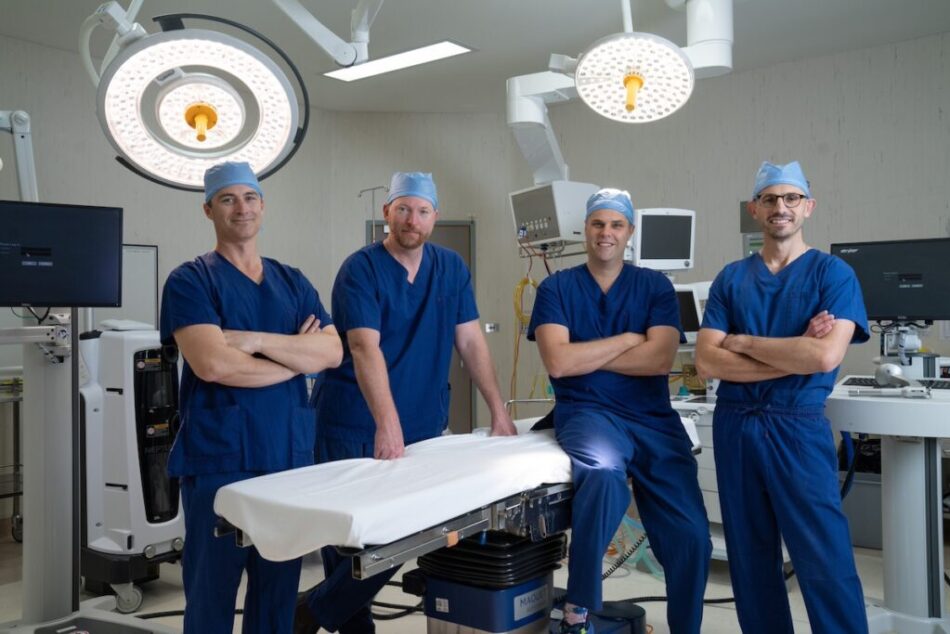Early intervention prevents worsening joint damage. If non-surgical treatments fail, seeking advice from a hip surgeon in Adelaide
Hip pain can affect mobility, making daily activities challenging. Whether due to aging, injury, or an underlying medical condition, persistent pain may require medical intervention. While some cases respond to conservative treatments, others might need surgical intervention.
Understanding treatment options and recognising when to consult a hip surgeon in Adelaide is crucial for long-term relief.
Non-Surgical Treatment Options for Hip Pain
Many people find relief through non-surgical treatments. These options help manage symptoms and may delay or prevent surgery.
1. Physiotherapy and Exercise
A structured physiotherapy program can improve flexibility and strengthen muscles around the hip. Low-impact exercises like swimming, walking, and yoga help maintain mobility without adding stress to the joint. Strengthening surrounding muscles can also provide better support to the hip joint and reduce strain.
2. Medication for Pain Management
Non-steroidal anti-inflammatory drugs (NSAIDs) like ibuprofen and paracetamol help reduce inflammation and relieve pain. Corticosteroid injections may provide temporary relief in severe cases. In some instances, disease-modifying treatments are recommended to slow the progression of conditions like arthritis.
3. Lifestyle Modifications
Maintaining a healthy weight reduces pressure on the hip joint, alleviating discomfort. Avoiding high-impact activities and using walking aids can also help manage pain. Simple adjustments, such as using cushioned footwear and ergonomic seating, can significantly improve comfort levels.
4. Alternative Therapies
Acupuncture, hydrotherapy, and chiropractic treatments offer additional pain relief. While these therapies do not cure underlying conditions, they may complement conventional treatments. Heat and cold therapy can also provide temporary pain relief and improve joint function.
Surgical Treatment Options for Hip Pain
When conservative treatments fail, surgical procedures may be the next step. The choice of surgery depends on the severity of the condition.
1. Hip Arthroscopy
This minimally invasive procedure treats labral tears, cartilage damage, and impingements. It involves small incisions and typically has a shorter recovery time. It is commonly performed on younger, active patients who wish to preserve their hip joint.
2. Hip Resurfacing
Suitable for younger patients, hip resurfacing preserves more bone than total hip replacement. It reduces pain while maintaining joint stability. This procedure may be ideal for individuals who engage in high levels of physical activity.
3. Total Hip Replacement (THR)
A common procedure for severe arthritis, THR, involves replacing the damaged hip joint with an artificial implant. Recovery involves physiotherapy to restore mobility. Modern implants offer long-lasting durability, making this a viable long-term solution for chronic hip pain.
When to See a Hip Surgeon in Adelaide
If hip pain persists despite non-surgical treatments, consulting a hip surgeon in Adelaide may be necessary. Certain symptoms indicate that medical intervention is required:
- Persistent Pain: If pain continues for months despite treatment, it may signal underlying joint damage.
- Limited Mobility: Difficulty walking, standing, or climbing stairs suggests that joint function is deteriorating.
- Severe Stiffness: Stiffness that limits movement could indicate osteoarthritis or another degenerative condition.
- Hip Deformity: Changes in hip alignment or leg length differences require professional assessment.
- Reduced Response to Medication: If pain relief from medications is minimal, surgical options may need consideration.
- Frequent Joint Instability: If the hip feels like it might give way, it could indicate joint weakness or cartilage damage.
Why Should Consider Knee Replacement?
Hip pain can sometimes affect knee function. If both joints experience discomfort, consulting knee replacement surgeons in Adelaide may be beneficial. Knee pain due to arthritis or joint degeneration can impact overall mobility. Hip and knee issues are often interconnected, and addressing one can help alleviate pain in the other.
Recovery and Rehabilitation After Hip Surgery
Post-surgical recovery plays a crucial role in regaining mobility. Rehabilitation includes:
- Physical Therapy: Helps restore strength and flexibility through targeted exercises.
- Pain Management: Medications and ice therapy reduce post-surgical discomfort.
- Gradual Activity Resumption: Avoiding strenuous activities prevents complications and promotes healing.
- Hydrotherapy: Water-based exercises can improve movement without putting pressure on the healing joint.
- Nutritional Support: A balanced diet rich in calcium and vitamin D supports bone healing.
Conclusion
Early intervention prevents worsening joint damage. If non-surgical treatments fail, seeking advice from a hip surgeon in Adelaide can help determine the best course of action. Individuals experiencing knee pain alongside hip issues may benefit from consulting knee replacement surgeons in Adelaide. Addressing joint pain effectively enhances the overall quality of life. Taking proactive steps toward treatment and rehabilitation ensures better mobility, pain relief, and long-term joint health.








![Best Holistic Wellness Center in Orange County [2025 Guide]](https://thestarbiznews.com/wp-content/uploads/2025/08/348s-55x55.jpg)